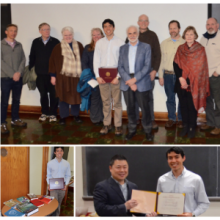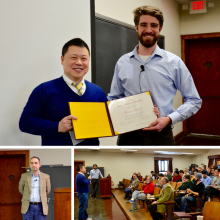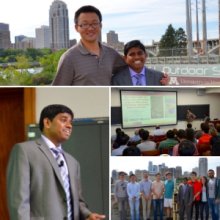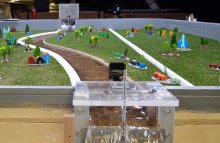SAFL Lab Insider Stories
Celebrating the accomplishments of those in the SAFL community

PhD student Vinicius Taguchi receives Alvin Anderson award
Posted
This past Tuesday, February 26th, SAFL was pleased to award the 2018-2019 Alvin G. Anderson award to Vinicius Taguchi, PhD Student in the Department of Civil, Environmental, and Geo- Engineering. The Alvin G. Anderson Award is awarded annually to University of Minnesota students pursuing graduate studies in water resources. Special consideration is given to students involved in the sediment transportation field, which was Dr. Anderson's specialty when a professor at the University of Minnesota from 1950 until 1975.

SAFL atmospheric research groups gear up for winter projects
Posted
As snowflakes start to swirl outside this Minnesota winter season, several SAFL research groups are getting ready to take advantage of the weather to help advance fundamental atmospheric research.
SAFL-led study shows watershed-scale nitrate reduction from wetland networks
Posted
SAFL-led study shows watershed-scale nitrate reduction from wetland networks

Michele Guala named Associate Director of Research
Posted
Michele Guala appointed as new SAFL Associate Director of Research

Michael Heisel accepts 2017-2018 Edward Silberman award
Posted
Michael Heisel, a Civil, Environmental, and Geo- Engineering PhD student at the St. Anthony Falls Laboratory was awarded the 2017-2018 Edward Silberman Award during a special SAFL seminar on January 23rd, 2018. The Silberman Award is awarded annually for outstanding research at SAFL. The fellowship award is paid for in honor of Edward Silberman by his family and friends to acknowledge his contribution to the lab. Michael received the award for his research titled, "New insights on wall turbulence from atmospheric measurements".

SAFL celebrates 50 years of the Lorenz G. Straub award
Posted
On Monday, October 22nd, SAFL was honored to celebrate 50 years of the Lorenz G. Straub award. Established by friends, family, and colleagues of SAFL founder and first director Lorenz Straub, the award looks to identify the most meritorious thesis of a calendar year in hydraulic engineering, ecohydrology, geophysical fluid dynamics, or related fields. The competition is international, and nominations may be made by any recognized civil and environmental engineering program in the world.

Tracking the fate of road salt in watersheds
Posted
A common Minnesota winter scene involves seeing a truck distribute road salt on icy roadways. But what happens to the chloride from the salt after the ice melts?

Teja Dasari defends PhD - "Near-wake studies of a utility-scale wind turbine using natural snowfall-based visualization and Particle Image Velocimetry"
Posted
Ph.D candidate Teja Dasari successfully defended his Ph.D in Mechanical Engineering on September 5th, 2018. He is advised by Associate Professor Jiarong Hong of the St. Anthony Falls Laboratory and Department of Mechanical Engineering at the University of Minnesota. Congratulations Dr. Dasari!

SAFL visualization illustrates how levees can impact flooding
Posted
Staff from ProPublica and Vox visited the St. Anthony Falls Laboratory to build a conceptual demonstration model of how levees influence flooding patterns.

University of Minnesota study opens possibility for more environmentally sustainable energy production in rivers
Posted
Hydrokinetic turbines are an emerging hydropower technology that takes advantage of moving water currents to generate power. Unlike traditional hydroelectric dams that require larger in-channel infrastructure that can disrupt flow and the river ecosystem, hydrokinetic turbines are placed directly in the river channel and have a much smaller environmental footprint.
